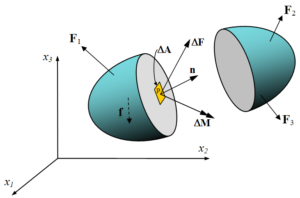
Courses

By Shailendra Singh
|
Updated on 16 Dec 2024, 18:30 IST
Force Constant: The stamina, power, energy, or potency as an aspect of physical action or movement is called force. In other words, any push or pull upon an object resulting in its movement is forced.
A force has both magnitude and direction, therefore, making it a vector quantity.
Hence, it can be said that force is energy that causes an object to move.
Sir Isaac Newton was one of the first scientists to study force and gravity. Any kind of push or pull can be defined as a force. It can be defined as pushing or shoving on a mass or an object.
Force is defined as the push or pulls on an object with mass that causes it to change its velocity.
In physics, force is a power that can change the movement or direction of movement of an object. This power can cause a heavy object to change its speed, that is, to accelerate. Pushing or pulling an object with a weight causes it to change its speed. Force is an external agent that can change the state of rest or movement of a particular body.
It has size and direction. The direction in which energy is used is known as the direction of energy and energy consumption is the area in which energy is used. Force is represented as F and its SI unit is Newton. The spring constant determines how much power will be needed to compress or to stretch the spring.


In physics, as defined by Hooke’s law, force constant is another term for spring constant. It is a consistent, very accurate measurement.
Stable k strength is related to system stability (or durability), in which the strength does not change, the maximum restored power and the strength of the system. Newton per meter (N / m) are units of k.
Some of the different effects of force are:
Aristotle symbolizes power/force as anything that makes something “move unnaturally”.
For example, when stretching a string, k is directly related to Young’s modulus.
Hooke’s law is a physical law that states that the force (F) is required to extend or compress a spring to a certain degree (x) scale according to that range — that is, Fs = kx, where k is the symbol of a constant element of spring (i.e., its durability), and x is small compared to the sum of possible spring transformations.

This law was coined by 17th-century British physicist Robert Hooke. He first introduced the law in 1676 as a Latin anagram.
He published a resolution of his anagram in 1678 [3] such as ut tension, sic vis (“as an extension, so power” or “extension equals power”). Hooke wrote in 1678 that he had known the law since 1660.
According to Newton’s third law of motion, each action has an equal and opposite reaction. This can best be seen in the case of spring when the pressure or stretching of the spring produces a contrasting force.
The powers covered by this law are defined by the law given to Robert Hooke.

Hooke’s law states that the type of material is proportional to the pressure applied within the elasticity of the material i.e., When elastic objects are stretched, atoms and molecules decompose into stress, and when the stress is removed, they return to their original state.
The following are some of the applications of the Hooke’s Law:
F=-kx
SI Unit N.m-1
There,
F spring recovery power directed at equity
k spring constant in N.m-1
x displacement of spring from its equilibrium point.
In other words, the spring constant is the energy used when spring migration is one. When force F is considered to extend the spring to clear the equation area by x.
We know that,
F=-kx
Therefore,
F=-kx=k=-Fx
Dimension of F=[MLT-2]
Dimension of x= [L]
Therefore, dimension of
k=MLT-2/[T]
=[MT-2]
The Force Constant Formula is offered as,
k=-Fx
where,
F = Power used,
x = removal in the spring
A negative sign indicates that restorative power is anti-migration
It is expressed in Newton per meter (N /m).
The SI unit of the force constant is Newton/meter (N/m) or kg/s2
The unit of force constant in CGS is dyne (d).
Any physicist knows that if an object uses energy from a source, then spring uses the same amount of energy in the object. Hooke’s law gives effect to the force applied to the object to which it is connected by the following statistics:
F=-kx
The subtraction sign indicates that this force is on the other side of the expansion or compression force spring.
The mathematical variables are F, representing the force, k, which is called the spring constant and measures the strength and intensity of the spring, and x, the distance the spring is extended or pressed away from the equation or resting position.
The power used by the spring is called the restoring power; it always works to restore spring to balance. In Hooke’s law, a negative sign in spring energy means that the energy used in the spring as opposed to spring’s migration.
Force is given as the product of mass and acceleration because whenever a force is applied to any object it results in the object’s motion with its weight, therefore,
F=mass×acceleration
F=m×a
Force constant or spring constant is a measure of the strength of the spring. It is the strength of each unit deformation. Its SI unit is N / m but in North America, it is usually measured in pounds/inches. High spring intensity means a strong spring and vice versa.
Force constant k depends on the nature of the bond that is the nature of spring in the mechanical system. The stronger or stiffer the bond, the larger the force constant.
The SI unit of the force constant is Newton/meter (N/m) or kg/s². The unit of force constant in CGS is dyne (d).
Force constant works on the principle of Hooke's Law.
Force constant is spring constant denoted by 'k'